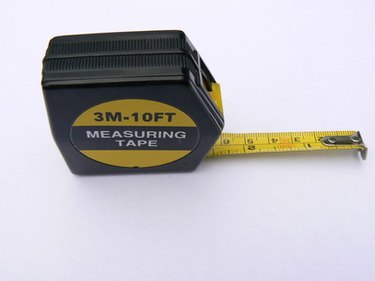
Many of the tools that people rely on are often taken for granted. The tape measure is one of the most utilized tools in home improvement, as well as many work environments. As of 2010, there are many different types and models of tape measures, each having its own advantages and disadvantages.
Metallic Tape Measures
Video of the Day
Steel tape measures have been manufactured since the 19th century, and are the most common type of tape measure used in construction. They are extremely durable and can measure up to 100 feet, depending on the tape measure. They are extremely compact, and can easily be carried from location to location. Their main downside is the danger that the metal can cut the skin during use. They also are not easily manipulated, so measuring an area that is not a straight line can be difficult.
Video of the Day
Soft Tape Measures
Used usually around homes or for sewing purposes, soft tape measures are a less evasive and rugged cousin of the steel tape measure. As hard tape measures are made of metal and have the ability to be “clicked” back at very high speeds, and cause cuts on the hand, soft tape measures prevent this from happening. They can also be used for areas that are difficult to get into, such as tight spaces and crevices, since they are easily maneuverable. Since soft tape measures are easily maneuverable to almost any shape and size, they can be used on round areas, something that’s nearly impossible for metal tape measures. Most soft tape measures do not roll up into a device, and are designed to cover much shorter distances than traditional steel tape measures, making them more disadvantageous to use on larger jobs that require lots of movement.
Laser Tape Measure
Many of the old-fashioned tape measures have made way for newer and more advanced technology. The laser tape measure is one of the newest types, offering many advantages compared with older, more traditional models. The main advantage with laser tape measures is the speed at which they work. They need only to be placed in one area and faced toward a hard surface of another area to correctly gauge a distance. Depending on the type, laser tape measures can also work with much longer distances. The downside to laser tape measures is that they can be difficult to use in situations when you do not have an actual area to bounce the laser on the opposing end. They also rely on batteries, which require replacement from time to time.